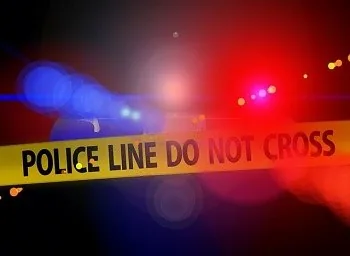NTSB Investigation of Fatal Tesla Accident
I’m Ed Smith, a Tesla accident lawyer in Sacramento. The driver of a Tesla model X died in a single vehicle accident in the morning hours of March 23, 2018, in Southern California. The National Transportation Safety Board is investigating how the accident happened. According to the NTSB, it is uncertain if the autonomous control was active at the time of the crash.
Details of the Accident
The California Highway Patrol (CHP) reported that the accident occurred when the Tesla hit the median roadway barrier on southbound Route 101 in Mountain View, California. The medical examiner of Santa Clara County identified the driver as Wei Huang, a 38-year-old resident of San Mateo. The vehicle caught fire almost immediately. Afterward, it was hit by a Mazda followed by an Audi. The driver was taken to the University Medical Center at Stanford. He died that afternoon despite attempts to save his life. Investigators were at the scene before the vehicle was taken away.
Tesla Responds
According to Tesla, the reason the accident happened was due to the absence of an attenuator, which is a safety barrier, in the area of the crash. The company said they believed that the attenuator was removed after another accident. Caltrans is exploring whether or not the barrier was in place. Tesla reported that the extent of damage to the Tesla went far beyond that of other crashes. The company also specified that other Tesla X drivers drove on Highway 101 for 85,000 miles with Autopilot engaged since 2015. Since a fire in a Tesla vehicle is dangerous due to its battery packs, Tesla said they are designed in a way that would allow vehicle occupants time to leave the car and avoid serious injuries related to a fire.
NTSB Investigation
This is not the first time that the NTSB has investigated the Tesla Autopilot system. It was a primary focus of an accident in 2016 when a 2015 Tesla Model S 70D crashed into a semi-trailer in the northern part of Florida. The driver of the car was killed in the crash, making it the first death of an auto-piloted vehicle. The truck driver was not injured. At the time, the NTSB initiated the investigation to determine if there were safety issues due to the use of self-driving technology and the extent of interaction between the system and the driver.
Details of the 2016 Crash
The crash occurred in Williston, Florida when the refrigerated truck was turning left crossing over US-27A eastbound from the US-27A westbound lane. The car hit the side of the truck on the right and went under it, shearing off the roof. The vehicle continued on and went off the road. It passed through two drainage areas ultimately hitting a fence and a utility pole before coming to a stop. It used radar and software to see if an object was in the way.
NTSB Conclusions of the 2016 Crash
In 2017, the NTSB released its conclusions. The report said:
- The Tesla has cruise control and lane keeping safety systems engaged at the time of the accident.
- The level 2 autonomous system was not intended to identify an accident about to happen, so it did not try to slow the Model S in response.
- The driver of the car was also at fault for relying on the Autopilot system and not intervening.
- There was no proof that either driver was impaired at the time of the crash.
- Both the Tesla driver and the truck driver could have reacted in time to avoid crashing.
- The driver of the Tesla was not paying attention to driving the vehicle. This can lead to an assortment of accidents when a car is not designed to intervene.
- The truck driver did not yield to the Tesla, which had the right-of-way.
Recommendations Made After the 2016 NTSB Investigation
The following recommendations were made after the investigation was completed:
- Manufacturers must tell owners the limits of the vehicle’s safety features.
- Make sure that collected data reflects whether or not self-driving features are being used before and after a crash. This data should be given to the NTSB and the NHTSA.
- Establish a standard reporting system for self-driving vehicles in regards to incidents, miles the car used automated features and crashes.
- Develop apps that gauge the driver’s amount of interaction, and alert the driver if an interaction is needed.
- Instruct the NHTSA to develop standards for automated vehicle performance and make sure it is incorporated into newly manufactured vehicles.
Tesla Accident Lawyer in Sacramento
I’m Ed Smith, a Tesla accident lawyer in Sacramento. If you or a family member is injured in a crash with a Tesla vehicle, an attorney with experience in Tesla crashes can help. Call me at (916) 921-6400 or (800) 404-5400 for friendly advice, free of charge. You can reach me online too.
I belong to the Million Dollar Advocates. This forum offers membership to trial attorneys nationwide who have won cases or negotiated settlements for over $1 million for clients. You can read more about my prior Verdicts and Settlements.
If you would like to know more about my practice, go to:
Photo Attribution: https://pixabay.com/en/police-crime-scene-blue-light-862341/
:cd cha [cs 896 ] cv

